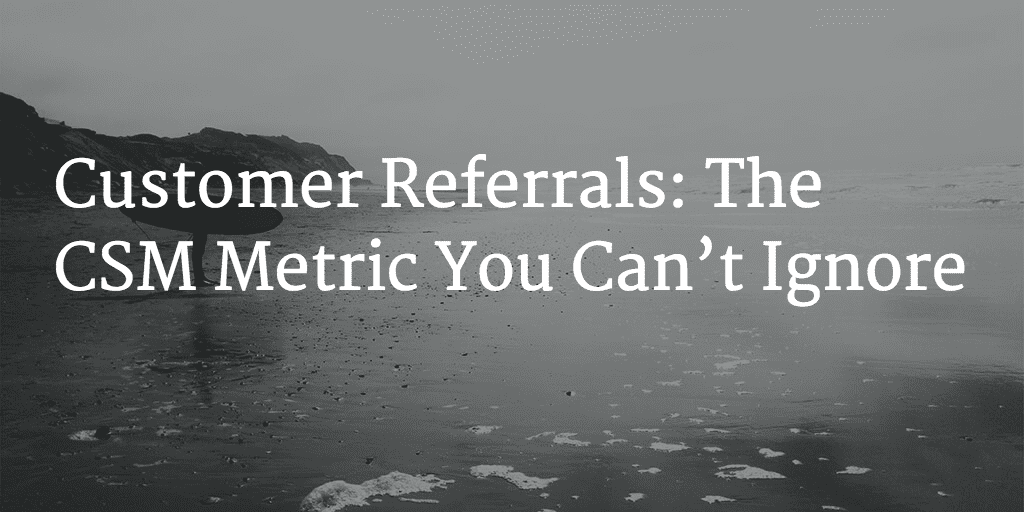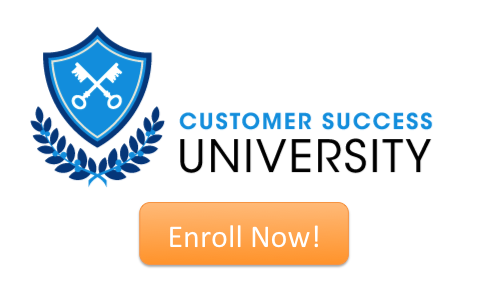Earlier this week, Lincoln wrote a fantastic article that outlined the three most common methods for measuring CSM performance. If you adopt any of the three methods outlined, you will be well on your way to increased retention and upsells.
I’d like to add to that list with one more measurement that, unfortunately, not enough companies are using to measuring the efficacy of their Customer Success teams.
The Three Acts of a Successful Customer
Successful customers do three things. Lincoln outlined two of them in his article – successful customers stay longer (retention) and they spend more (upselling).
But there is a third activity that successful customers take – successful customers tell their friends (referrals). If customer referrals are not on your customer success dashboard, you are leaving significant value on the table.
What is a customer referral? Simply put, it’s an opportunity for new business that is generated via a recommendation from your existing customer relationships. This is different than a reference, where you ask an existing customer to help you close a lead that you generated yourself. A customer referral is a lead that is surfaced by your customer through their own personal relationships.
In many ways, it’s the last mile of your Net Promoter program – the part where customers who said that they are extremely likely to recommend you to a colleague actually do so.
A Healthy Referral Engine Increases Your Company Value
If you’ve spent any length of time at a growth mode company, you are no doubt familiar with metrics like the “magic number“, CAC ratio [PDF], and other metrics that investors use to judge the quality of your growth engine.
While there are many good approaches to improving these measures, building a great referral engine is one of the best because it impacts multiple variables.
1) Higher Close Rate
Your customers have first-hand experience with your company, and know their friends and colleagues more intimately than you do. As such, a phenomenon known as the “better-matching mechanism” kicks in – in most industries, leads generated from the customer base will have a higher close rate than organic leads because they are pre-qualified to be a good fit, leading to improved sales efficiency.
2) Lower Lead Cost
Well designed CSM-driven referrals programs reward both the CSM and the customer (sometime monetarily, sometimes in other ways) and do so at a total cost that is less than that of the cost-per-lead for other marketing channels. With enough of your new business coming from referrals, your overall average cost-per-lead will decrease materially.
3) Higher Adoption and Retention
In most instances, referred customers tend to be more loyal. Part of this is due to the aforementioned “better-matching mechanism”. But it also has to do with the fact that the referring customer acts as a “virtual customer success manager” to friends and colleagues they refer. To use myself as an example – I am a rabid promoter of TripIt. As such, I’ve convinced many colleagues to buy TripIt Pro, and that generally includes spending time showing them how to effectively use it.
How Can a CSM Influence Referrals?
According to one study, 87% of satisfied customers would refer additional business if asked – but only 7% were asked! Customer Success Managers are uniquely positioned to drive increased referrals. In many cases, it’s as simple as asking at the appropriate time, to the appropriate customers.
Who?
The best place for a CSM to identify customers likely to refer is your Net Promoter data. After all, a customer who gives a 10 has explicitly said “I am extremely likely to refer a friend or colleague”. It doesn’t take a data scientist to figure out that these are the first customers you should be asking for referrals.
When?
A CSM should only ask for referrals when they are confident that the customer is realizing the full value of your products and services. Tools like Gainsight make it easy to identify when the time is right to ask for referrals based on the health of the customer.
What?
Your approach when asking for referrals will vary based on your market, industry, and customer persona. Asking for a referral in a high-touch B2B environment should look very different than asking for a referral in a high volume B2C environment. Look at the techniques of those CSMs who are generating the most referrals with the highest close rate, and use that as a starting point for your team’s best practices.
There is tremendous mutual value to be unlocked by building a CSM-driven referral engine. But as the saying goes – what gets measured gets managed. Companies that want to maximize the return on their customer success investment would be well served by not ignoring this critical measure of CSM success.
The best way to ensure high-performing Customer Success Managers is to enroll them in Customer Success University now.

